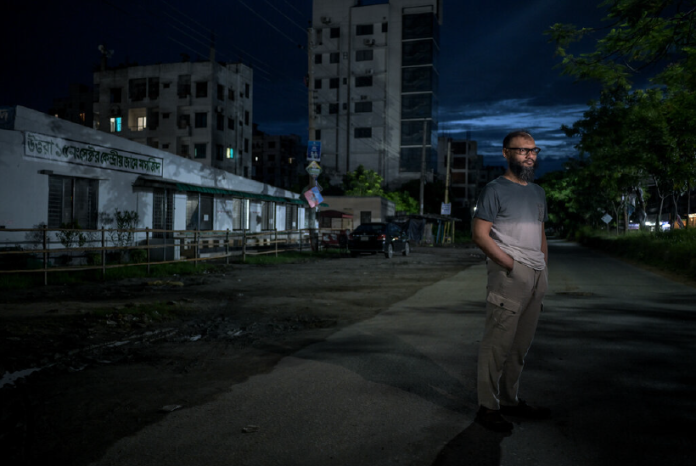In a recent investigative report by The New York Times, the harrowing details of secret prisons and enforced disappearances under Sheikh Hasina’s regime in Bangladesh have come to light. The revelations paint a grim picture of the years of repression that took place behind closed doors, with hundreds of political activists, dissidents, and their families falling victim to state-sanctioned abductions and torture. One of the most notorious of these secret facilities was dubbed the House of Mirrors, where prisoners were kept in the dark, tortured, and mentally broken during their captivity.
This exposure comes in the wake of Sheikh Hasina’s ouster in August 2024, following nationwide protests and international pressure on her government. The fall of her regime has given a voice to those who had been silenced for years, and the accounts emerging from survivors are nothing short of horrifying.
A Legacy of Enforced Disappearances
The New York Times report underscores the sheer scale of enforced disappearances during Hasina’s 15-year rule. Human rights groups have reported over 700 disappearances between 2009 and 2024, with many individuals still unaccounted for. Some of the disappeared were found dead, while others were released after enduring years of torture. However, many remain missing, their families holding onto the faint hope that they might one day return.
One such survivor is Mir Ahmad Quasem Arman, who was abducted in 2016 and held for eight years in a windowless cell. His only crime was being the son of a prominent opposition figure. Arman’s story, like that of many others, is a haunting reflection of the fear that gripped Bangladesh during Hasina’s rule. Locked away from the outside world, Arman was unaware of the passage of time and the changes taking place in his country. He returned to a transformed city with new infrastructure, but his life had been irreversibly altered by the years of isolation and abuse.
The House of Mirrors: A Symbol of Fear
The House of Mirrors stands as a grim symbol of the oppressive tactics used by Hasina’s regime. In this underground facility, political prisoners were subjected to brutal treatment, both physical and psychological. Torture methods included relentless interrogation, deprivation of food and water, and mental abuse aimed at breaking the prisoners’ will. The goal was not merely to punish, but to erase these individuals from society, silencing their voices and eliminating opposition.
For many prisoners, time became meaningless. Days and nights blurred as they lived in constant fear, not knowing if they would ever be released or if they would simply disappear forever. Some survivors, like Arman, clung to thoughts of their families, praying for a reunion that felt increasingly distant with each passing year.
A Nation in Mourning
As Bangladesh reckons with the end of Hasina’s rule, the country is left grappling with the consequences of years of political repression. Families of the disappeared have been left in a state of limbo, many of them still searching for answers. The fight for justice has taken on renewed urgency, with human rights organisations calling for accountability for the abuses committed during Hasina’s tenure.
The rapid collapse of Hasina’s government on August 5, 2024, led to the reappearance of several long-missing political prisoners. For families who had spent years campaigning for the return of their loved ones, these reunions were bittersweet. Though relieved to see them alive, the scars of torture and trauma remain visible. Survivors, such as Michael Chakma, a tribal rights activist who was held for five years, have spoken out about the unbearable isolation and suffering they endured.
The military, which played a central role in carrying out many of the enforced disappearances, now faces intense scrutiny. While it positions itself as a stabilizing force in the post-Hasina era, its involvement in human rights abuses casts a long shadow over its credibility. Investigations into the full extent of the disappearances and torture are only beginning, and calls for justice are growing louder.
The Struggle for Justice
For many families, the trauma of enforced disappearances remains an open wound. Mothers, fathers, and children who lost their loved ones to Hasina’s regime have fought tirelessly for answers, organizing protests and vigils in the hopes that their missing family members would return. Their fight is far from over, as hundreds of individuals remain unaccounted for, their fates still unknown.
The revelations about secret prisons like the House of Mirrors highlight the brutal methods used by Hasina’s regime to maintain control. What began as a government promising democratic reform devolved into an authoritarian state where opposition was met with swift and violent retaliation. Political paranoia drove Hasina to weaponize state forces, including the Rapid Action Battalion (RAB) and military intelligence units, to carry out these disappearances with impunity.
While Hasina’s regime has ended, the path to justice is just beginning. Survivors of the disappearances and their families demand accountability for the years of abuse they endured. International human rights groups have called for an independent investigation into the disappearances, and many are urging the newly formed government to ensure that those responsible are held accountable.
Bangladesh at a Crossroads
The fall of Sheikh Hasina has brought Bangladesh to a critical juncture. As the nation grapples with the legacy of enforced disappearances and torture, the struggle for justice is likely to define the country’s political future. The road to healing will be long, and it will require a full reckoning with the abuses that occurred under Hasina’s rule.
The stories of survivors, like those detailed in The New York Times, serve as powerful reminders of the resilience of the human spirit in the face of unimaginable suffering. As Bangladesh moves forward, it must confront its dark past and ensure that such atrocities are never repeated. Only through truth, justice, and accountability can the country begin to heal from the wounds of the Hasina era.




